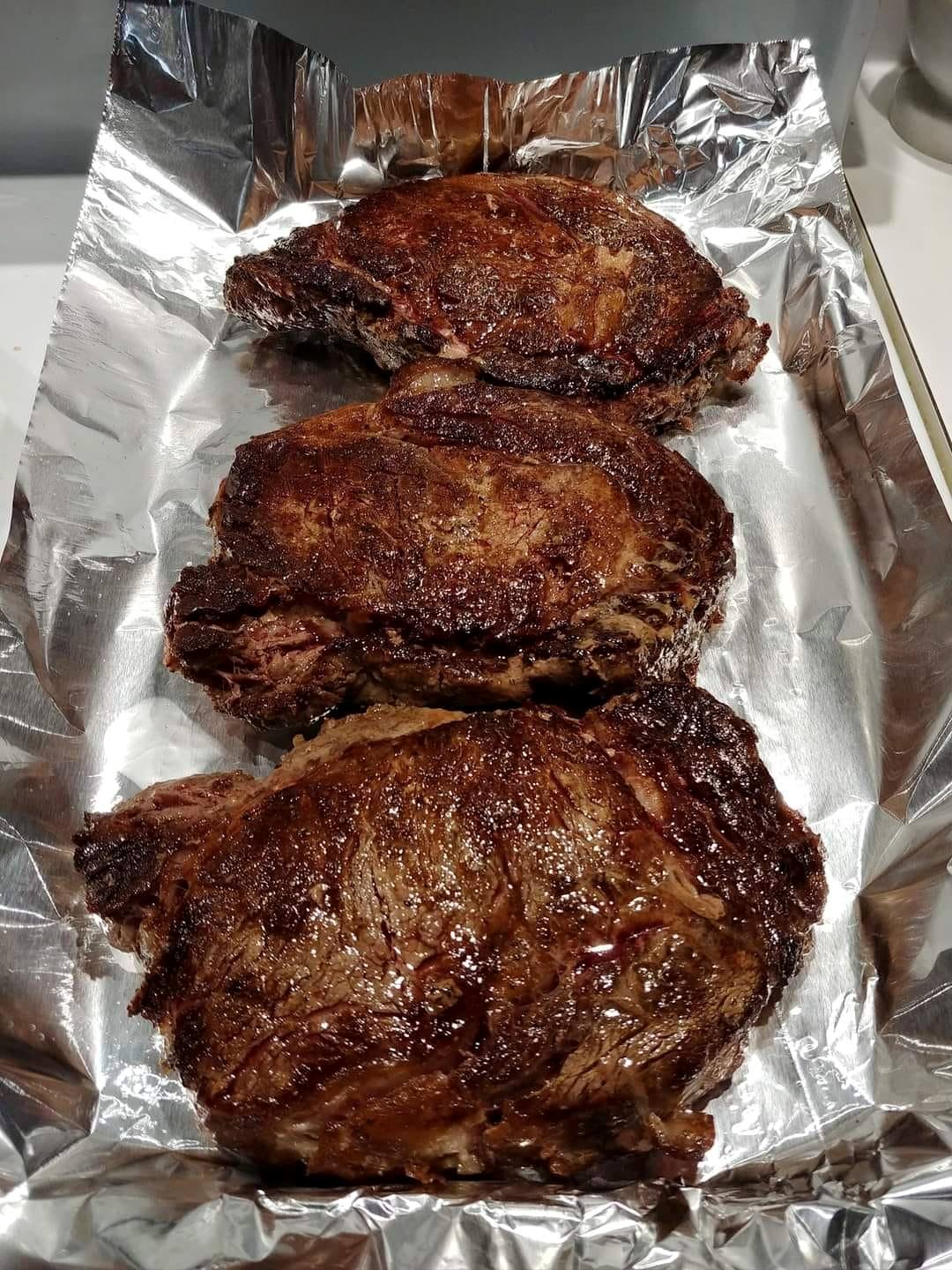
Ingredients
1 rib-eye steak
flaky sea salt
freshly ground black pepper
50g of butter
2 sprigs of thyme
1 garlic clove, bashed with the skin left on
1
Remove the steak from the fridge at least half an hour before cooking to allow it to come to room temperature. This is an important step to ensure a consistent cook throughout the steak
2
When ready to cook, season the steak generously. Sprinkle with plenty of salt and pepper on both sides from a height to get an even coverage
3
Get your frying pan smoking hot. If you are cooking 2 steaks, make sure your pan is large enough to fit the steaks in with plenty of room– if not, use 2 pans and heat both up simultaneously. Add the steak to the pan and cook on a medium-high heat for 2–3 minutes on each side (depending on thickness and how well-done you like your steak). As a very rough guide, a 3cm-thick steak should be cooked medium-rare after 5 minutes. If you have a meat thermometer, the internal temperature should be 50°C for rare, 60°C for medium and 70°C for well-done
4
After flipping the steak for the first time, add the butter with the thyme and garlic and baste for a minute. To do this, tilt the pan towards you so the butter pools at the bottom of the pan, then spoon the butter back over the steak repeatedly
5
Remove the steak from the pan and leave to rest for 5 minutes. Don’t be tempted to skip this step as it is an important one – during the cooking process the particles in the meat tighten up, so if you slice into it straight after cooking all the juices will flood out onto the board. Resting time allows the particles to relax and reabsorb their liquids, meaning you don’t lose any of those delicious juices when carving
6
Slice the steak across the grain, season and serve up with your choice of sides and sauce
